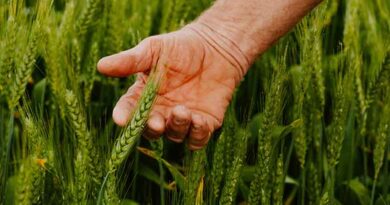Storm damaged trees boost nature recovery at restored Aberdeenshire watercourse
02 November 2022, UK: “This is an exciting next phase in the recovery of the Beltie burn, which we restored two years ago from an artificially straightened channel to a vibrant wetland system flowing into a meandering stream, to boost biodiversity and the region’s resilience to flooding. Since then the site has had time to heal and develop naturally and its success was recognised by the RSPB Nature of Scotland Awards. But although the wetlands are flourishing the river channel remains less varied than we’d like, in terms of different habitats for fish and invertebrates to use – the channel is also quite low and the structures will push the water levels up. We know that nature and climate resilience do best when watercourses are connected with their floodplains”
This release was issued by the Dee Catchment Partnership:
Efforts to boost natural habitats and climate resilience at the recently re-meandered Easter Beltie Burn near Torphins continued this month when around 50 mature trees complete with their root plates were added to the watercourse. In a £12,000 project, the Storm Arwen-damaged trees originally growing in Scolty now form 15 large woody structures, which have been dug into the river bed to create habitats for wildlife and further slow down the flow of water during periods of heavy rain. The project, spearheaded by the Dee Catchment Partnership, brings together the Dee District Salmon Fishery Board, the Cairngorms National Park Authority and Forestry and Land Scotland in this ambitious project.
Dr Susan Cooksley is a freshwater ecologist at the James Hutton Institute and Manager for the Dee Catchment Partnership. She said: “This is an exciting next phase in the recovery of the Beltie burn, which we restored two years ago from an artificially straightened channel to a vibrant wetland system flowing into a meandering stream, to boost biodiversity and the region’s resilience to flooding. Since then the site has had time to heal and develop naturally and its success was recognised by the RSPB Nature of Scotland Awards. But although the wetlands are flourishing the river channel remains less varied than we’d like, in terms of different habitats for fish and invertebrates to use – the channel is also quite low and the structures will push the water levels up. We know that nature and climate resilience do best when watercourses are connected with their floodplains.”
Each made up of three to six 8-metre-long trees and their sizable root plates, the 15 large woody structures have been buried into the bank and stream bed of the Beltie burn’s lower meandering channel and pinned securely with wood, in a practice that’s been successfully pioneered in the upper Dee catchment by the Dee District Salmon Fishery Board in recent years. The process is laborious involving heavy machinery which transport the trees from their source to carefully chosen locations, selected to deliver the biggest habitat benefits.
River Operations Manager for the Dee District Salmon Fishery Board, Edwin Third, led the design and installation of the large woody structures into the Beltie, and has coordinated the addition of nearly 150 such structures to watercourses throughout the upper catchment in the last few years. “These rivers once flowed through a wooded landscape, and riverside trees would have been a vital part of the habitat structure, providing shade, shelter and food – as well as pools and gravel beds when they fall into the river, where aquatic species can hide from predators,” he explains. “Nowadays these must be among the rarest habitats in Scotland and with Atlantic salmon in crisis, we urgently need to get them back.
“Salmon have a very complex life cycle, requiring different types of habitat at different stages. By adding large woody structures to the river, we can help to create these complex and diverse habitats for them, but we also support all the native wildlife, interrupting and trapping vegetation and boosting aquatic insects, creating feeding platforms for birds like dippers, and the kind of entangled, protective structures that otters love – the benefits are widespread.Salmon will be navigating these structures in the next few weeks as they make their way up the Beltie to spawn.”
“With the ready availability of these storm-damaged trees, it was the obvious next step for the Beltie – to create a variety and complexity of habitats for nature, just as beavers do, and improve the connectivity between the river and its floodplain by raising the level of water,” adds Susan. “It has also given us a chance to hone our skills in creating these structures in more silty, low lying streams. We have learnt a lot from these works at the Beltie and this will allow us to tackle other projects in the area with confidence.”
Funded by NatureScot’s Biodiversity Challenge Fund and designed by cbec eco engineering UK, the restored site has been closely monitored since works began in 2020 by Edwin, Susan and their colleagues from the James Hutton Institute, River Dee Trust and Edinburgh Napier University, with a raft of measurements from water levels to species surveys taken before and after each new development, allowing them to build up an accurate picture of the benefits of their efforts. As one of the first partnerships in the country to add large woody structures to watercourses, the team will continue to document the works to help develop similar techniques in river projects elsewhere in Scotland.
Philippa Murphy, Environment Advisor for Forestry and Land Scotland, which donated the trees and funded their transportation to the site, said: “It’s fantastic to see these trees being repurposed for nature in this way, and we were delighted to be involved in the project.”
Despite the restoration site not falling within the boundaries of the Cairngorms National Park, the works were funded by the Park Authority, which is keen to apply learnings from Easter Beltie to the monitoring and design of its own such activities in the National Park planned for the next decade as part of the £55 million Heritage Horizon project.
Also Read: Best Agrolife Ltd subsidiary receives patent for ternary fungicidal effective against Late Blight and Downy Mildew
(For Latest Agriculture News & Updates, follow Krishak Jagat on Google News)















